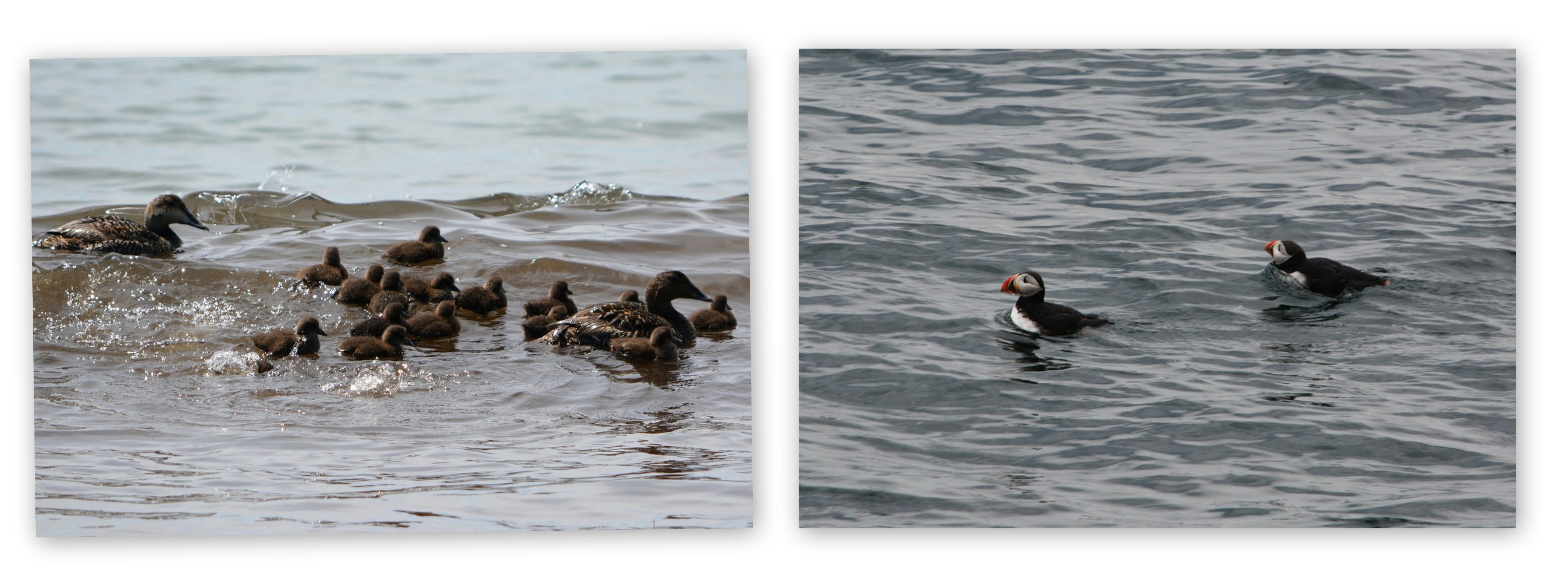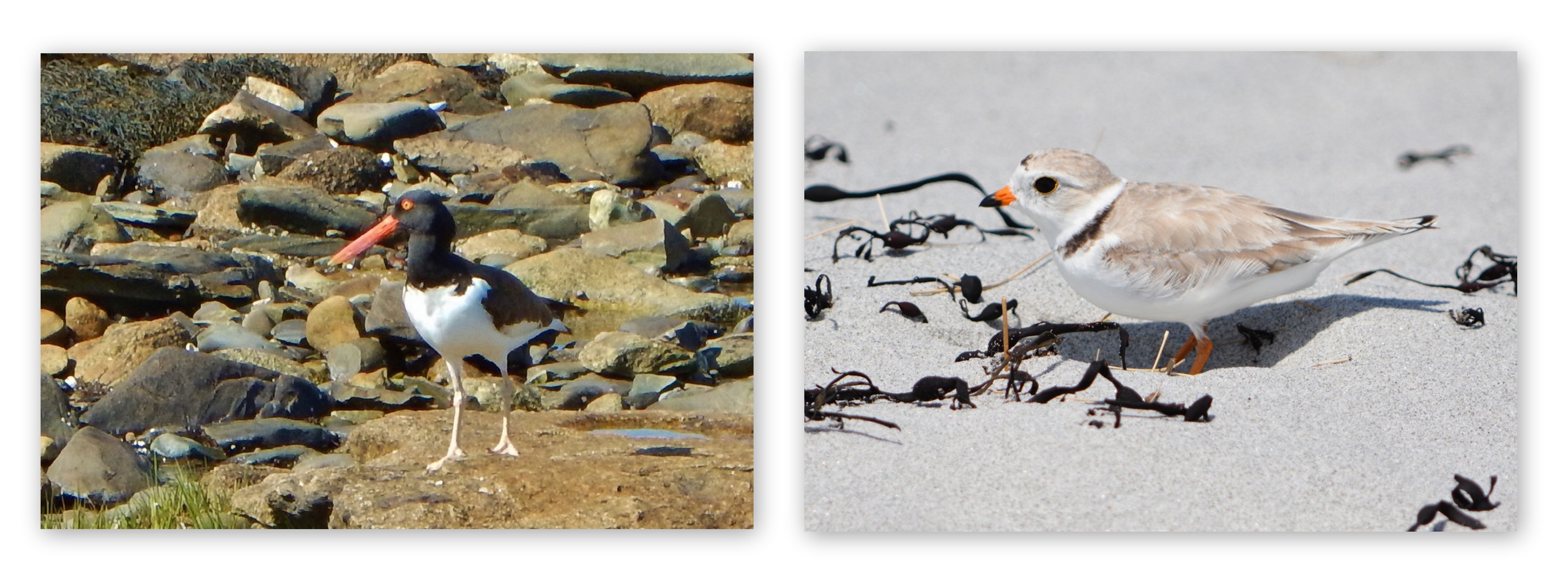A Common Eider with her brood and a pair of Atlantic Puffins were highlights in Maine.
 |
On June 12 our extended family went on a nine-day vacation to visit Randi's aunt at Kennebunkport, Maine. It was not a birding trip, but we were able to see some wonderful birds.
On the day we arrived, we headed for New Harbor near Boothbay, two hours north of Kennebunkport. Our daughter had booked all six of us on a puffin watch. She knows that we love birding and wanted us to take the puffin trip. With an Audubon guide on board, we started off to Eastern Egg Rock Island which is the southernmost nesting place for Atlantic Puffins.
After a half-hour ride, we approached the island and started searching for the puffins. Suddenly several flew around our 60-foot Maine-built boat. They looked like tiny flying penguins but kept their distance from the boat. Fairly quickly two landed on the water, and we were able to get better views with our binoculars. With all of this flurry of puffins, we counted about 15. The rocky island nearby where the puffins nested also had many Black Guillemots and Common Eiders nesting. Needless to say, we were thrilled to see our only life bird of the trip, the Atlantic Puffin.
The next day we arrived at Goose Rocks Beach, where we spent the remainder of our vacation. We were pleasantly surprised at the birds we encountered there. Goose Rocks Beach, a part of Kennebunkport, is about three miles of lovely scalloped shoreline with a wide sandy beach and a large rocky peninsula at each end. The outer rocks become partially covered at high tide and then become islands protected from predators.
The beach is terminated by a small river at each end. These islands (at high tide) must be visited briefly at dead low tide in order not to be stranded there. The tide is about 14 feet from low to high. We explored these areas several times hunting for starfish and sea urchins in the tidal pools. We were pleasantly surprised at the birds we encountered. Two American Oystercatchers, a female Common Eider, and a Common Tern were nesting on the rocks. We were less than 30 feet from these birds.
Our younger grandson had discovered three nests, and we were able to see the eider and the tern on their nests. The oystercatchers tried to lure us away from the nesting area. We also got close looks at the eggs at one point when the birds were flying overhead. In the water nearby were 36 female and 17 male Common Eiders.
The beach has a small protected area for nesting Piping Plovers. There were five pairs of plovers and one successful nest with four chicks. Several times we were able to view four baby plovers and three adults very closely. Great Black-backed Gulls were also on the beach in small numbers at various times.
It was fun to incorporate birding into a family vacation with our two grandsons, who are 17 and 10 years old. Tamara Connolly, our daughter, enjoys nature and took these photographs.
— by Sarah and Randi Gerrish (all photographs by Tamara Connolly)
This American Oystercatcher was a rarity as far north as Maine. The Piping Plover was near its northernmost breeding range.
 |
|
The trip list: |
| Atlantic Puffin |
American Oystercatcher |
Black Guillemot |
Common Eider |
Common Tern |
Great Black-backed Gull |
Piping Plover |







